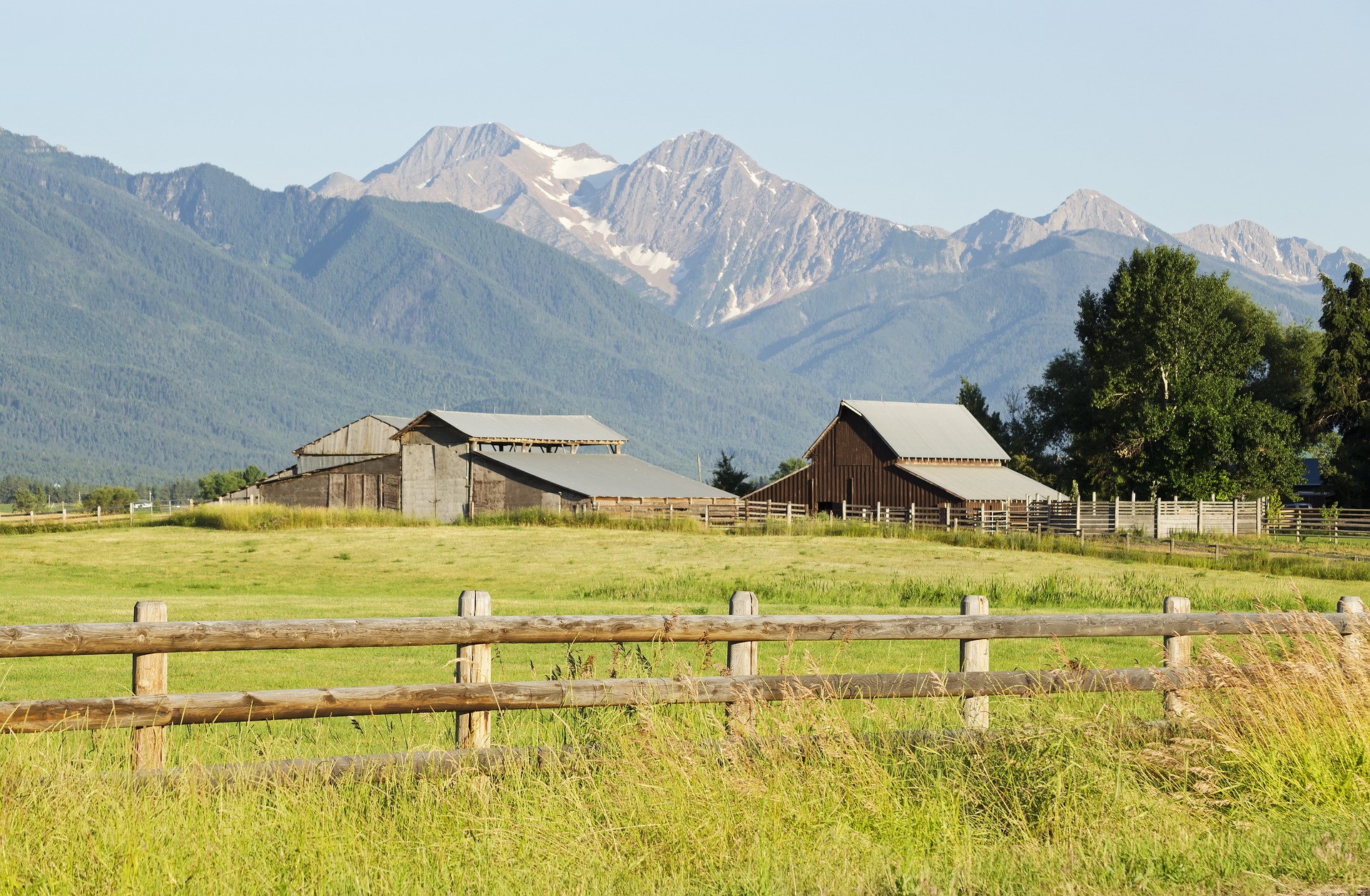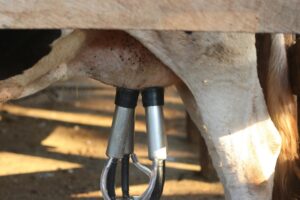When Neil told me he wanted big acreage in the country, I told him it was a pipe dream. Then I learned about agricultural exempt property taxes in Texas and suddenly swapping our City of Austin taxes for agricultural exempt land made our initial 20 acre purchase feasible.
Embarking on the journey of homesteading brings a myriad of rewards: self-sufficiency, a connection to the land, and the opportunity to live a simpler, more sustainable lifestyle. However, one often overlooked aspect of homesteading is the financial benefit of agricultural exempt taxes. In many states, homesteaders, ranchers, and farmers can significantly reduce their property tax burden by qualifying for agricultural exemptions. In this comprehensive guide, we’ll explore the top states for agricultural exempt property taxes, how to find ag exempt properties, and the steps to obtain new exemptions.
The Financial Advantage of Agricultural Exempt Taxes
Property taxes can be a substantial expense for homesteaders, especially for those of us seeking to live off the land and cultivate our own food, and food for our communities. Agricultural exempt taxes offer a valuable opportunity to reduce this financial burden by providing tax breaks or exemptions for qualifying agricultural properties. These exemptions can result in significant savings, allowing us to allocate more resources toward farming and ranching endeavors, and overall sustainability goals.
Most states in the U.S. offer some form of property tax relief for agricultural land, typically assessing it based on its agricultural use value rather than market value. However, the specifics of these programs can vary widely from state to state. Some states may have more stringent eligibility criteria or provide less significant tax benefits compared to others.
Also, to note: all U.S. states have property taxes; however, the rates and rules vary significantly. While no state completely forgoes property taxes, some states have relatively low property tax rates or offer substantial exemptions and relief programs, particularly for agricultural land and primary residences. Hawaii, Alabama, and Louisiana are known for having some of the lowest property tax rates in the country.
Top States for Agricultural Exempt Property Taxes
1. Texas
• Benefits: Texas is renowned for its favorable agricultural exempt tax policies, making it a top destination for homesteaders seeking tax relief. The state offers the 1-d-1 Open-Space Land Agricultural Valuation, which provides reduced property taxes for agricultural land. The benefit varies by county, with some counties offering tax reductions of up to 95% for qualified properties.
Texas 1-d-1 land refers to land that qualifies for an agricultural appraisal under Section 1-d-1 of the Texas Constitution. This special appraisal allows land used for agricultural purposes to be appraised based on its productive value rather than its market value, resulting in significant property tax savings for landowners. To qualify, the land must be primarily used for agricultural activities such as farming, ranching, or wildlife management, and must have been used for these purposes for at least five of the past seven years. If the land you are looking at purchasing doesn’t already have an agriculture (or wildlife) exemption in place, it will take you five years of that specific use until you reap the tax benefits.
In addition to the basic qualifications, landowners seeking an agricultural exemption must submit an application to their local appraisal district, providing documentation that demonstrates the land’s agricultural use. This includes detailed records of farming or ranching activities, income from agricultural production, and proof of the land’s historical use. If the property you are purchasing already has an exemption in place it will carry over, but only for the same agricultural use so be sure you know what that is and have your livestock requirements in place with documentation in time to file the paperwork in your name with your local appraisal district.
Each county’s requirements for agricultural use may vary, so check with your local appraisal district. They also may change from year to year. In Blanco County, homesteads with 5 acres can now achieve agricultural exemption with honey bees, previously it was 5 acres, plus 1 for the homestead, totaling a minimum of 6 acres. In Blanco County livestock exemptions start at 10 acres plus 1 for the homestead, so a minimum of 11 acres total. Knowing the country’s minimum acreage requirements are important before signing on that dream homestead.
• Resources: For more detailed information and to access application forms, visit the Texas Comptroller’s website: Agricultural and Timber Property Tax Exemptions.
• Bonus: Texas offers additional tax relief for farmers, ranchers, and timber producers through agricultural and timber sales tax exemptions. To claim these exemptions, you must obtain an agricultural and timber registration number (Ag/Timber Number), which allows you to purchase qualifying items used exclusively in production without paying Texas sales and use tax. Qualifying items include machinery, equipment, feed, fertilizer, and plants used in commercial agricultural production. The Ag/Timber Number must be renewed every four years, and both online and paper application options are available for obtaining this number. For more detailed information and to apply for or renew an Ag/Timber Number, visit the Texas Comptroller’s website: Agricultural and Timber Exemptions.
2. Florida
• Benefits: Florida boasts agricultural exempt tax programs tailored to support small-scale farming and homesteading efforts. The state offers the Agricultural Classification, also known as the Greenbelt Law, which provides tax breaks for qualifying agricultural properties, with reductions up to 80%. As of spring 2024, there are updates to this law being considered.
The Florida Greenbelt Law is designed to reduce property tax burdens on land used for bona fide agricultural purposes, such as crop production, livestock, poultry, aquaculture, and other similar activities. The property must be actively engaged in agricultural production, and the owner must provide evidence of such use, including income documentation, expense records, and details of agricultural practices. By assessing property based on its agricultural use value rather than market value, the law provides significant tax savings to qualifying landowners. To benefit, landowners must demonstrate continuous and good faith commercial agricultural use, and meet specific criteria such as land size, income from agriculture, and the duration of agricultural activities.
• Resources: Florida Department of Revenue – The Florida Agricultural Classified Use Appraisal Guidelines and the Application and Return for Agricultural Classification of Lands
3. California
Despite its reputation for high living costs, California offers agricultural exempt tax incentives to support farming and ranching activities. Homesteaders can explore agricultural zoning maps and contact county assessor offices to identify eligible properties and apply for tax reductions.
The Williamson Act: Offers property tax relief for agricultural land, with reductions up to 90%.
Formally known as the California Land Conservation Act, the Williamson Act provides property tax relief for landowners who commit to keeping their land for agricultural or open-space use for a minimum of 10 years. This law helps preserve farmland and open space by offering significantly reduced property tax assessments based on the land’s agricultural use rather than its potential market value. Contracts automatically renew annually, and if a landowner or local government wishes to terminate the contract, a gradual process of nonrenewal is initiated.
• Resources: California Department of Tax and Fee Administration – Williamson Act.
Farmland Security Zone (FSZ) Contracts: These provide greater property tax reductions than Williamson Act contracts, and the contracts last for 20 years.
Land under a Farmland Security Zone (FSZ) contract is assessed at 65% of its Williamson Act valuation or Proposition 13 valuation, whichever is lower. The minimum initial term for an FSZ contract is 20 years, and similar to Williamson Act contracts, FSZ contracts renew annually.
Mills Act: Though primarily for historic properties, it can apply to historic agricultural properties.
In order to qualify, the structure must be a designated historic building. After a property owner enters a Mills Act contract, the county assessor annually determines the property’s value using a prescribed capitalization rate per Revenue and Taxation Code section 439.2. This restricted value is compared to the current market value and the Proposition 13 value, with the lowest value being used for tax purposes. Rehabilitation and maintenance expenses influence the Mills Act valuation. Once recorded, the property is assessed on the next lien date (January 1), and tax benefits typically begin the following fiscal year. For more details, visit OHP’s official website.
4. Georgia
• Benefits: The Conservation Use Valuation Assessment (CUVA) program provides tax reductions up to 90% for qualifying agricultural and timber properties.
This program allows agricultural landowners in Georgia to benefit from reduced property tax assessments by committing to keep their land in agricultural or timber production for at least 10 years. Participants can have their property taxed based on its current use rather than its market value. Visit the Georgia Department of Revenue for more information.
5. North Carolina
• Benefits: The Present-Use-Value (PUV) program offers property tax relief up to 90% for agricultural and horticultural properties.
The North Carolina Department of Revenue’s Present-Use Valuation (PUV) program offers property tax reductions for land actively used for agriculture, horticulture, or forestry. Under this program, land is assessed based on its current use value rather than market value, resulting in significant tax savings. To qualify, landowners must meet specific criteria, including size and income requirements, and commit to maintaining the land’s use for a minimum period of 10 years. This commitment ensures the long-term preservation of agricultural and forest lands.
• Resources: North Carolina Department of Revenue – PUV Program.
6. Oregon
• Benefits: Oregon offers agricultural exempt tax programs to support farming and ranching activities. The state’s Special Assessment of Farmland and Forestland program provides property tax reductions for qualifying agricultural and forestland properties, with reductions of up to 90% for eligible properties.
To be eligible for Oregon’s Farm Use Special Assessment, landowners must use their property primarily for agricultural purposes and generate a minimum income from farming activities. The land must meet size and usage requirements, and owners must file an application with the county assessor.
The tax savings come from the land being assessed based on its agricultural value rather than its higher market value, often resulting in significantly lower property taxes. This encourages the preservation of farmland by reducing the financial burden on farmers.
• Resources: Oregon Department of Revenue – Assessment of Farmland.
7. Michigan
• Benefits: The Qualified Agricultural Property Exemption program offers property tax reductions up to 80% for qualifying agricultural properties.
To qualify, the property must be primarily devoted to agricultural use and meet certain size and income requirements. For properties less than 40 acres, they must generate at least $200 per acre annually in gross receipts from agricultural activities. Properties of 40 acres or more do not have a specific income requirement but must still be devoted primarily to agricultural use. Applications must be submitted to the local assessor with detailed information about the agricultural activities on the property. The exemption removes the property from the school operating millage, which significantly lowers the tax burden for eligible agricultural properties.
• Resources: Michigan State Tax Commission – Agricultural Property Tax Exemptions.
8. Colorado
• Benefits: The Agricultural Land Classification program provides property tax reductions up to 90% for qualifying agricultural properties.
To qualify, land must be used primarily for agricultural purposes, including crop production, livestock, or other farming activities. The property is assessed based on its productive capability rather than market value, resulting in lower taxes. There are no specific minimum acreage requirements; however, the land must generate a minimum gross income from agricultural production, which varies by the type of agricultural activity. Continuous use for agricultural purposes must be demonstrated.
• Resources: Colorado Department of Local Affairs – Valuation of Agricultural Property.

9. Arkansas
• Benefits: Arkansas offers property tax relief for agricultural land through its Agricultural Land Use Valuation program. Tax reductions can be substantial, depending on the land’s productivity and classification. To qualify, land must be actively used for agricultural purposes, with specific criteria based on land use type and income from agricultural activities. Property is assessed based on its agricultural use value rather than market value, which can result in substantial property tax reductions, often ranging from 50% to 90%.
Typically, a minimum of 10 acres is required, but this can vary depending on the specific use and local guidelines. Crop land is assessed based on soil productivity, with higher productivity soils receiving higher valuations but still lower than market value. Similar to crop land, pasture land is assessed based on productivity and use while timber land is based on the type of timber and the land’s capacity to produce it, often resulting in lower valuations.
• Resources: Arkansas Assessment Coordination Division – Agricultural Land Use Valuation.
10. Tennessee
• Benefits: Tennessee provides property tax relief for agricultural land through the Greenbelt Law, officially known as the Agricultural, Forest, and Open Space Land Act of 1976. Tax reductions can be significant, with qualifying properties assessed based on their agricultural use value rather than market value, with typical reductions of 75% or more compared to market value.
To qualify as agricultural land in Tennessee, a property must be at least 15 acres, including woodlands and wastelands, and either be part of a farm unit engaged in agricultural production or have been farmed by the owner or their immediate family for at least 25 years while serving as the owner’s residence without conflicting uses. The property assessor evaluates factors like acreage, land productivity, and actual use for farming. If the land generates at least $1,500 in gross agricultural income annually over three years, it is presumed agricultural, though this is not a strict requirement. Even without income, active farming qualifies the land.
• Resources: Tennessee Comptroller of the Treasury – Greenbelt Law.
Worst States for Agricultural Exempt Property Taxes
1. New Jersey Challenges: High land values and stringent criteria make it difficult for homesteaders to benefit from the Farmland Assessment Program.
2. Connecticut Challenges: Limited availability and strict requirements hinder the effectiveness of the Farmland Preservation Program.
3. New York Challenges: High property taxes and complex regulations make it difficult for homesteaders to obtain agricultural exemptions.
4. Massachusetts Challenges: High land costs and limited exemption programs make it challenging for small-scale farmers under the Agricultural Preservation Restriction Program.
5. Rhode Island Challenges: Limited agricultural land and high taxes create barriers for homesteaders seeking tax relief.
6. Vermont Challenges: High property taxes and strict regulations limit the effectiveness of agricultural exemptions like the Current Use Program.
7. Maryland Challenges: High land values and stringent criteria make it difficult for homesteaders to benefit from the Agricultural Land Preservation.
8. New Hampshire Challenges: Limited agricultural exemption programs and high property taxes pose barriers.
9. Delaware Challenges: High property taxes and limited agricultural tax incentives make it challenging for homesteaders.
10. Hawaii Challenges: High land values and limited agricultural exemptions create barriers for homesteaders.
How to Obtain Agricultural Exemptions
Research State Laws
Familiarize yourself with your state’s agricultural exempt tax laws, including eligibility criteria, application procedures, and deadlines. Since agricultural exemptions can vary by county, I recommend visiting your local appraisal district or tax assessor’s office.
Consult with Local Authorities
Reach out to the local appraisal district or county tax assessors, agricultural extension offices, and land use planners for guidance on obtaining agricultural exemptions and navigating the application process.
Identify Eligible Properties
Use online resources such as state government websites, property tax databases, and agricultural zoning maps to identify eligible agricultural properties in your desired area. In the Texas Hill Country, we found that most properties included their exemption status in the MLS description, or we could look at previous tax years to get an idea of the exemption status.
Gather Documentation
Prepare the necessary documentation to support your application, including property records, agricultural plans, and proof of farming activities. Know when the filing dates are and don’t be late!
Submit Your Application
Complete the required application forms and submit them to the appropriate county or state authorities along with supporting documentation.
Follow Up
Stay informed about the status of your application and follow up with authorities as needed to ensure timely processing and approval of your agricultural exemption. We don’t need to file an update here in Blanco County, but I like to pop into the appraisal district office once a year just to make sure I didn’t miss an envelope in the mail.
Navigating agricultural exempt taxes can be a complex but very rewarding for homesteaders seeking financial relief. By researching state laws, identifying eligible properties, and working with local authorities, you can unlock valuable tax incentives and maximize the financial benefits of your home and agricultural pursuits.


